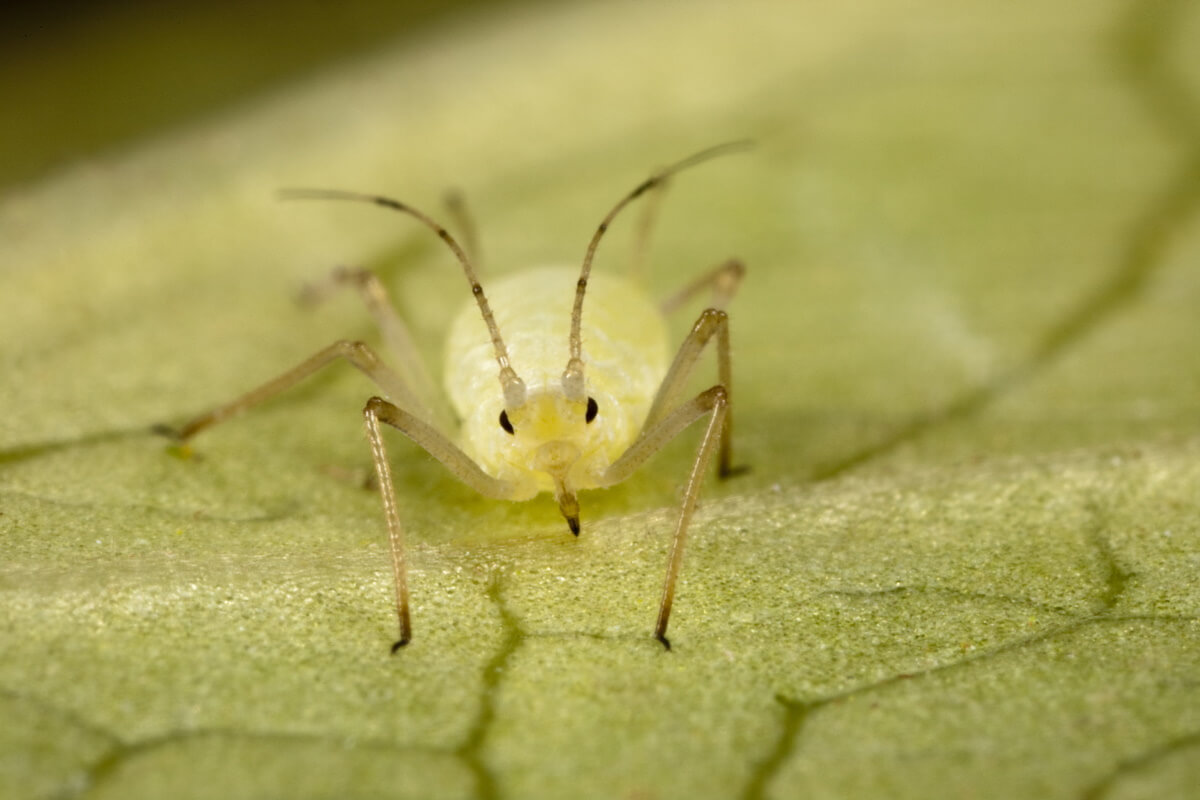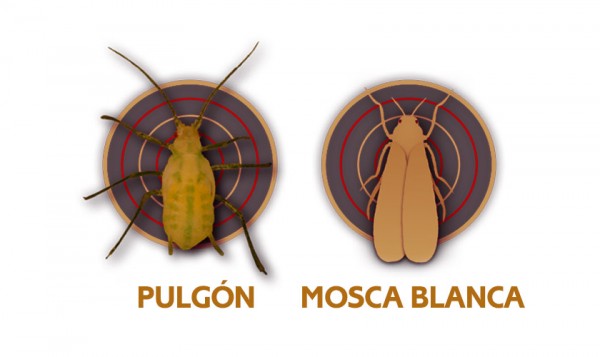Lettuce aphid: how to control it quickly and effectively

Aphid on plant structure
The lettuce aphid is one of the most common pests of lettuce. Its presence varies depending on the weather conditions occurring throughout the year, meaning that the elimination of this pest is necessary to avoid aesthetic damage and production losses.
In all cases, we recommend acting after the appearance of the first outbreaks, since the populations have the capacity to reproduce rapidly in just a few days. Furthermore, eradicating them proves complicated when they colonize the internal parts of the lettuce. Pirecris is a natural insecticide designed by Seipasa to control lettuce aphids quickly and effectively.
Although the lettuce aphid is more common in spring, factors associated with climate change, with milder winters, increase the possibility of its appearance in colder seasons. Their ability to reproduce and develop slows down at temperatures below 10º C, but is much faster when temperatures exceed 20º C.
In colder regions, the aphid overwinters as an egg that will hatch the following spring, while in more temperate climates, with milder winters, the aphid can survive as an adult mobile form capable of maintaining its reproductive activity, hence the importance of not letting our guard down at practically any time of the year. Myzus persicae, Nasonovia ribisnigri and Macrosiphum euphorbiae are usually the most abundant species in lettuce crops.
Symptoms and plant damage
The symptoms of an aphid attack on lettuce are easy to identify by the wrinkling of leaves, deformations in the youngest shoots and the yellow or brown spots that appear in the points closest to the bites or sucking caused by the adult aphids. The lettuce aphid is also a potential vector for the transmission of different plant viruses through the honeydew they secrete.
Although colonization usually starts progressively on the outer leaves until it reaches the bud, if there are winged adult individuals we can find infections that quickly reach the plant’s central leaves, making it difficult to control the pest. So, as we emphasized at the beginning of this article, prudence requires immediate action at the first signs of infection, whether the plant is young or about to form buds.
Insecticides for aphid control on lettuce
Pirecris is a natural insecticide developed by Seipasa to quickly and effectively eliminate the presence of the lettuce aphid. It is a bioinsecticide that acts with a powerful knock-down effect and has a very short safety period, so it can be applied against attacks that take place in stages very close to harvest.
Graph 1 shows the results of the trial conducted in Spain to assess the efficacy of Pirecris in the control of aphids on lettuce (Nasonovia ribisnigri). The conclusions indicate that with Seipasa’s bioinsecticide we were able to control the pest without the need to resort to any chemical synthesis solution. Pirecris stops the life cycle of the pest from the third day of application and equals the efficacy of the chemical reference one week following the second application.
Graph 1. Evolution of the aphid population (Nasonovia ribisnigri) in lettuce.
The key to the action of Pirecris lies in its exclusive formulation, thanks to the perfect balance of the PI and PII molecules that make up the active substance, which provide maximum insecticidal efficacy, both in the field and the greenhouse.
The micro-molecules in its formulation condense and generate a stable, balanced network throughout the solution, providing perfect coverage of the leaf and the insect. Pirecris provides a strong insecticidal effect that acts by blocking the insect’s respiratory system, causing its death. The product acts on the eggs and larvae, resulting in a very significant reduction in the numbers in new generations.
Graph 2 shows the product’s efficacy for the control of another aphid species on lettuce, in this case Myzus persicae, through a trial developed in Mexico. In this case, in addition to controlling the pest and reducing its incidence to practically zero after the first count, with Pirecris we managed to match the efficacy of the biological reference (Pyrethrin 6%), although with an amount of active ingredient three times lower.
Graph 2. Evolution of aphid population (Myzus persicae) in lettuce.
Pirecris is a bioinsecticide with phytosanitary registration against thrip, aphid, whitefly and Cicadellidae in a wide range of crops and countries, such as Spain, Italy, Portugal, Greece, Cyprus, France, Mexico, Colombia and Morocco. It is, therefore, a solution with an extensive international track record, tried and tested in a wide range of agricultural systems.


%20in%20lettuce.jpg)
%20in%20lettuce..jpg)

